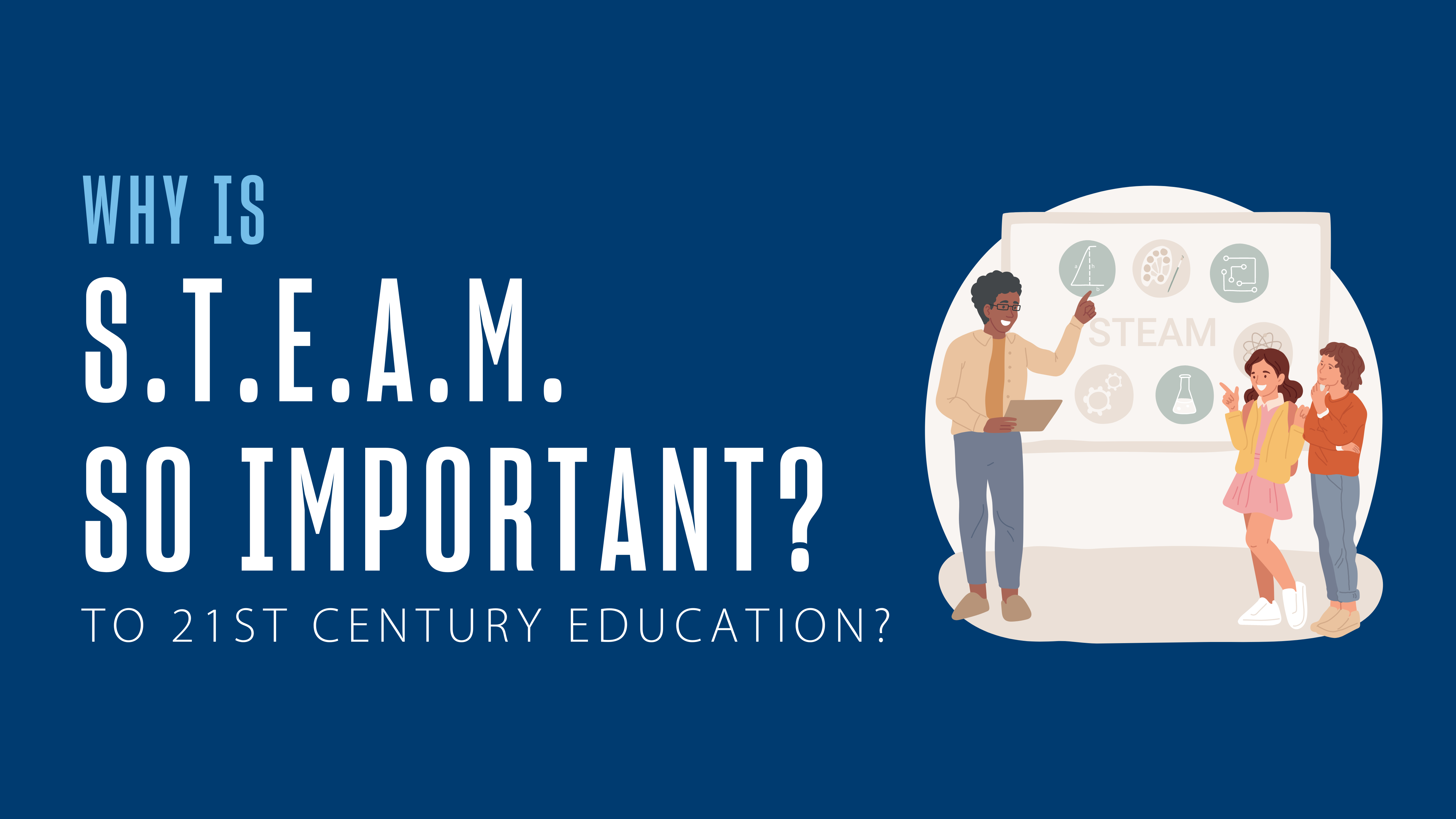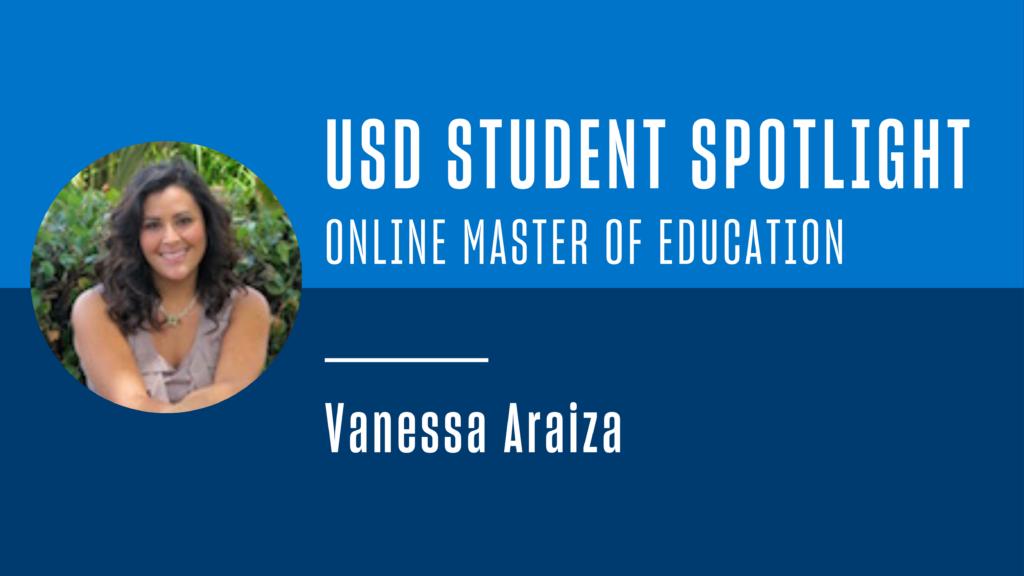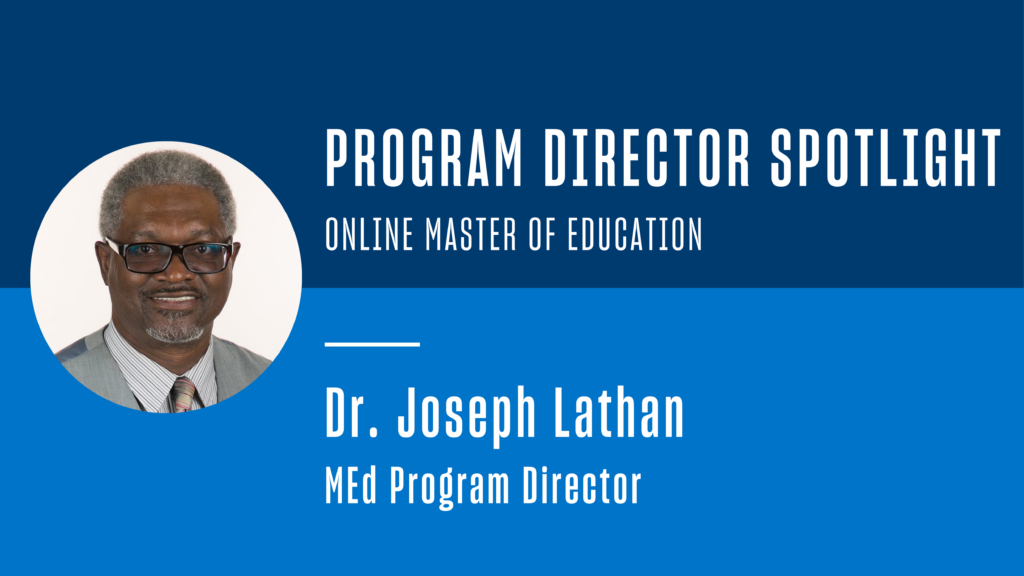As the education world explores strategies to equip students with the skills and knowledge they’ll need to be successful innovators in a 21st century workforce, there has been a growing emphasis on STEAM — the educational discipline that engages students around the subjects of Science, Technology, Engineering, the Arts and Math.
Many education experts regard STEAM (and its predecessor STEM) as an essential component of 21st century education. Why? According to the U.S. Department of Education, “In an ever-changing, increasingly complex world, it’s more important than ever that our nation’s youth are prepared to bring knowledge and skills to solve problems, make sense of information, and know how to gather and evaluate evidence to make decisions.” Enhancing such skills lies at the heart of STEM and STEAM education.
Additionally, STEM and STEAM graduates “play a vital role in developing meaningful solutions to societal problems, such as the (COVID-19) public health crisis we are currently facing,” says Michael Milligan, CEO and executive director of ABET, a technology and engineering accreditation organization. The STEM Careers Coalition is collaborating on a COVID-19 Response Initiative project, examining how STEM professionals are pivoting their skills in response to the coronavirus pandemic.
Want the Brochure for USD’s Online Master of Education Degree?
Earn your M.Ed. in just 20 months with a program designed for working professionals.
What is STEAM?
STEAM is an educational discipline that aims to spark an interest and lifelong love of the arts and sciences in children from an early age. Science, Technology, Engineering, the Arts and Math are similar fields of study in that they all involve creative processes and none uses just one method for inquiry and investigation. Teaching relevant, in-demand skills that will prepare students to become innovators in an ever-evolving world is paramount, not only for the future of the students themselves but for the future of the country.
STEAM empowers teachers to employ project-based learning that crosses each of the five disciplines and fosters an inclusive learning environment in which all students are able to engage and contribute. As opposed to traditional models of teaching, educators using the STEAM framework bring the disciplines together, leveraging the synergy between the modeling process and math and science content, for example, in order to blur the boundaries between modeling techniques and scientific/mathematical thinking. Through this holistic approach, students are able to exercise both sides of their brain at once.
The interplay between art and science is highlighted in an article titled “Communicating Science Concepts Through Art: 21st Century Skills in Practice,” by Sandy Buczynski, an associate professor with the University of San Diego’s Master of Education program, and three co-authors.
“There is a dynamic synergy between the visual arts and the natural sciences,” according to the article. “For example, science relies heavily on individuals with visual-art skills to render detailed illustrations, depicting everything from atoms to zebras. Likewise, artists apply analytic, linear and logical thinking to compose and scale their work of art.”
Buczynski and her co-authors write: “These parallel spaces of science and art are pulled toward each other by the education needs of the 21st century.” STEAM education, they contend, is particularly important in the scientific disciplines because, “The next generation of scientists will need to develop their communication skills through both traditional means of writing and speaking, as well as more artistic means including illustrating, animating, videography, cartooning and model building. (See the full article.)
In one real-life example of STEAM in action, an Andover, Mass., high school drew the spotlight for its approach to teaching geometry through the lens of art. “Through a scavenger hunt at a local museum, math and art students come to understand that scale in geometry is the same thing as perspective in art,” Andover High teacher Meghan Michaud said in a U.S. News article.
Beyond the classroom, both scientists and engineers use models — including sketches, diagrams, mathematical relationships, simulations and physical models — to make predictions about the likely behavior of a system. They also collect data to evaluate the predictions and possibly revise the model as a result. However, many engineers are not particularly comfortable with sketching; so connecting them with basic artistic skills through STEAM, and equipping them to better “see” their ideas, can help them become better engineers.
Also considered to be very helpful in preparing secondary students to succeed in higher education, STEAM has gained popularity among educators, parents, administrators, corporations and other institutions.
Why is STEAM so Important?
In today’s world, setting students up for future success means exposing them to these disciplines holistically in order to develop their critical thinking skills.
“Education is under pressure to respond to a changing world,” education writer Jeevan Vasagar asserts in a Financial Times article. “As repetitive tasks are eroded by technology and outsourcing, the ability to solve novel problems has become increasingly vital.”
And the earlier students are exposed to the STEAM disciplines, the better. In a study by Microsoft, 4 in 5 STEM college students (78%) said they decided to study STEM in high school or earlier, and one in five (21%) decided in middle school or earlier. Yet, only 1 in 5 STEM college students feel that their K–12 education prepared them extremely well for their college courses in STEM. There also appears to be a major disparity in the female to male ratio when it comes to those employed in STEM fields. Getting more girls interested in STEAM disciplines is another facet of the movement.
Not only does a STEAM framework teach students how to think critically, problem solve and use creativity, it prepares students to work in fields that are poised for growth. A report from the U.S. Bureau of Labor Statistics projects growth in STEM and STEAM-related occupations of 8% between now and 2029, compared to 3.4% for non-STEM occupations. It also lists median annual wages of $86,980 for STEM/STEAM jobs, compared to $39,810 for all occupations.
Even for students who don’t choose a career in one of the STEM/STEAM fields, the skills students gain from a STEAM education can be translated into almost any career.
“Educating students in STEM subjects (if taught correctly) prepares students for life, regardless of the profession they choose to follow,” technology innovator and President of Enterra Solutions Stephen F. DeAngelis says in an article in Wired. “Those subjects teach students how to think critically and how to solve problems — skills that can be used throughout life to help them get through tough times and take advantage of opportunities whenever they appear.”
An important part of this educational approach is that students who are taught under a STEAM framework are not just taught the subject matter but they are taught how to learn, how to ask questions, how to experiment and how to create.
Are You An Educator Considering the M.Ed Path?
Read the top 11 reasons to earn your master of education degree.
STEM vs. STEAM
Before there was STEAM, there was STEM. The key innovator credited with updating STEM to STEAM by adding the arts is Georgette Yakman, an engineering and technology teacher who was the founding researcher of the STEAM educational framework in 2006.
However, the change was not about just “adding another thing” to STEM. Yakman explains that: “STEAM is about more than converging the fine arts and design thinking into STEM fields. The liberal arts are, the ‘who & why,’ the reasoning, to the ‘what & how’ of STEM.”
What is the History of STEM?
The acronym STEM was reportedly introduced in 2001 by scientific administrators at the U.S. National Science Foundation (NSF), which had previously used the acronym SMET. More generally, America’s expanded emphasis on science and technology education dates back at least to the early days of the so-called “Space Race” between the U.S. and the Soviet Union, which kicked into high gear when the Soviets launched Sputnik, the first satellite to orbit the Earth, in 1957.
Why the “A” in STEAM is Important in Education
The Rhode Island School of Design (RISD), one of the early champions of adding the arts to the original STEM framework to create STEAM, said that doing so emphasizes the vitally important “symbiosis between the arts and sciences.” According to RISD, “The goal is to foster the true innovation that comes with combining the mind of a scientist or technologist with that of an artist or designer.” Former RISD President John Maeda, an early influencer for STEAM, has emphasized the idea that design thinking and creativity are essential ingredients for innovation.
The addition of the ‘A’ (The Arts) to the original STEM discipline to create STEAM is important in part because practices such as modeling, developing explanations and engaging in critique and evaluation (argumentation), have too often been underemphasized in the context of math and science education.
Adding “the Arts” to STEM to create STEAM is about “incorporating creative thinking and applied arts in real situations,” according to SteamPoweredFamily.com, whose article “What is STEM and STEAM? A Guide for Parents and Educators” asserts that, “Art is about discovering and creating ingenious ways of problem solving, integrating principles or presenting information. Picture an architect, they use engineering, math, technology, science and arts to create stunning buildings and structures.”
How to Specialize in STEAM
To the extent that STEAM education is based on a foundation of integration — of integrating different skills and disciplines with the goal of providing a richer educational experience — all teachers can benefit from a deeper understanding of the fundamentals of STEAM education.
For teachers who wish to specialize in STEAM, there are a number of educational opportunities available, including certifications and advanced degree programs (see more below).
For schools and districts looking to more formally embrace STEAM education, the Institute for Arts Integration and STEAM offers helpful resources, including an informative article titled “Becoming a STEAM School.”
STEAM Certification & Courses
Several of the notable certifications available for teachers seeking to position themselves for success in STEAM education, and to demonstrate their expertise on their resume, include the following:
- Arts Integration Certification | Institute for Arts Integration and STEAM
- National Certificate for STEM Teaching | National Institute for STEM Education
- STEM.org Certified™ | stem.org
There are also numerous opportunities for teachers to begin their own STEAM education journey without committing to a certificate or a degree program, through courses offered by online learning platforms such as Udemy and through Massive Open Online Courses (MOOCs) now offered by some universities.
[RELATED] How to Advance Your Career: A Guide for Educators >>
STEAM Classroom Resources, Activities & Lesson Plans
Here is a helpful collection of STEAM education resources designed for use by classroom teachers and others:
- Edutopia.org includes a collection of articles and videos including “The Art of Thinking Like a Scientist” and “STEM to STEAM: Art in K-12 is Key to Strong Economy.”
- Educationcloset.com (website of the Institute for Arts Integration and STEAM) offers a curated selection of STEM and STEAM articles, including lessons, apps, websites and more.
- The Institute for Arts Integration and STEAM offers a free “Ultimate STEAM Resource Pack”
- TechLearning.com offers “35 Resources for the STEAM Classroom: Putting the Arts in STEM.” This post suggests that Leonardo da Vinci was an early adopter of STEAM.
- ResilientEducator.com also publishes a comprehensive set of resources geared to “STEAM Teaching for Educators.”
Want the Brochure for USD’s Online Master of Education Degree?
Earn your M.Ed. in just 20 months with a program designed for working professionals.
Scholarships for Future STEAM Educators
STEM and STEAM scholarships are widely available for those looking to pursue an academic degree in this vitally important field of study. Here are several listings of top scholarship opportunities:
- Ultimate Guide to STEM Scholarships for Women for 2020
- 20 STEAM Scholarships Teachers Can Recommend to Their Students
- Department of Defense STEM Scholarships
- STEM Scholarships | U.S. News
- STEAM Scholarships for Minority Students
- Best STEM Scholarships
- 34 STEM Scholarships to Apply for Now
STEAM Grants & Financial Resources
Grants and financial resources are offered by a range of organizations to help educators bring STEAM education to their schools and to help fund specific projects. Here are several listings of potential STEAM and STEM grant opportunities:
- STEM Grants for K-12 & Nonprofits | STEMgrants.com
- STEM Grants (state, federal, corporate, nonprofit) | Stemfinity.com
- STEAM Education Grants | ResilientEducator.com
[RELATED] How to Advance Your Career: A Guide for Educators >>
Inclusivity Excellence in STEAM
Women and minorities have traditionally been under-represented in such science and technology-oriented disciplines such as engineering, mathematics, cybersecurity, data science, STEM and STEAM. Today, many organizations — private companies and government agencies as well as industry advocacy groups — are actively trying to address this inequity.
“It’s no secret that employers are looking for young talent with STEM skills and digital literacy,” Donald E. Bossi, president of FIRST (For Inspiration and Recognition of Science and Technology), writes in an article in Diversity in STEAM Magazine. “As educators, parents, and business leaders, we have a responsibility to offer all students – especially those who are underserved and underrepresented in STEM – equitable opportunities and pathways to success as contributing members of the workforce.”
Girls Who STEM is another online resource focused on ensuring that STEM and STEAM opportunities are available to all.
The Future of STEAM Education
Leonardo Da Vinci was on to something years ago when he stated, “Study the science of art. Study the art of science.”
So says author, futurist and business technology advisor Bernard Marr, writing in Forbes.com that STEAM education is essential to “prepare our kids for the fourth industrial revolution.” Though we cannot know right now what some jobs of the future will look like, “It makes sense to educate our children with the skills and capacity to think outside the box with creative solutions. This is something a STEAM education can effectively prepare them to do,” he said.
“If the children and students of today are our future, this is the type of education we need,” Naveen Jain, founder of the World Innovation Institute, wrote a number of years ago when STEAM was just gaining momentum (“Schools Out for Summer: Rethinking Education for the 21st Century“). The traditional system of “standardized, rote learning that teaches to a test is exactly the type of education our children don’t need in this world that is plagued by systemic, pervasive and confounding global challenges,” he said. “Today’s education system does not focus enough on teaching children to solve real-world problems and is not interdisciplinary, nor collaborative enough in its approach.”
This same type of thinking is inspiring many educators to master the art of STEAM education so they can better prepare their students for future career opportunities. In addition to online courses and certifications, one of the best options available to educators seeking to become STEAM specialists is to earn a master’s degree in this increasingly essential field.
For example, the University of San Diego offers a 100% online Master of Education degree program that gives students the option to specialize in STEAM, learning from accomplished faculty instructors with extensive experience in K-12 instruction and research. Visit the MEd STEAM specialization page on the USD website to learn more about the program, the course of study and curriculum.





